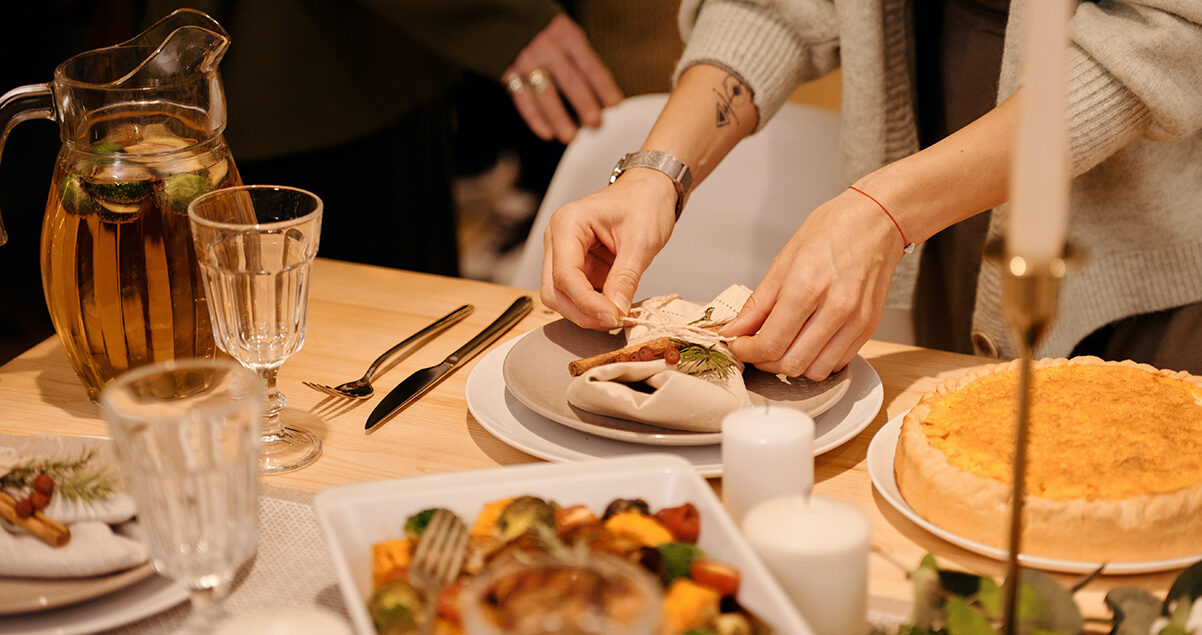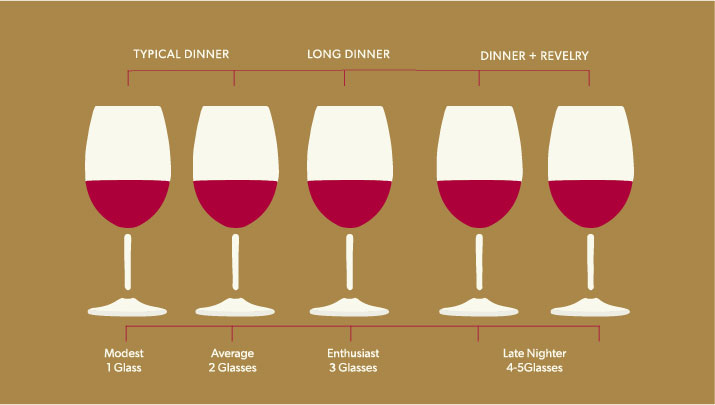6 Hosting Tips for a Stress Free Dinner Party
You’re hosting this holiday season and have decided to go big. You want to make sure everything goes off without a hitch. Easier said than done, right? Whether you’ve hosted before or this is your first time, there always seems to be an internal tug-of-war between wanting to impress and wanting to spend time with your guests. After all, getting together is about sharing a moment with the people you love… and also sipping great wine.
We’ve got good news for you. You can pull off a gathering that both the entertainer and the entertained will enjoy.
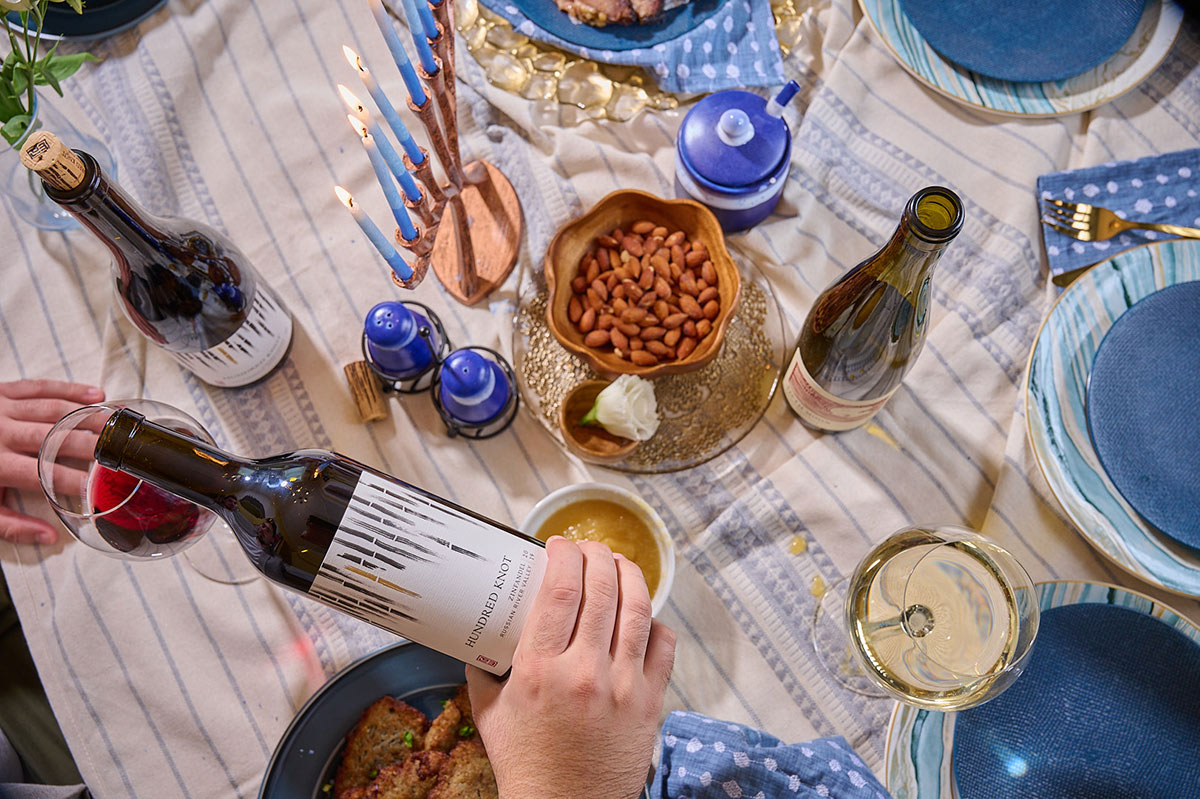
Tip #1: How to plan out your dinner party
Laying out a road map for your get together is the most important step for success. At least a week in advance, plan out your menu, choose your wines, make your shopping list, and create a timeline for food prep. Here are a few of our favorite tricks to keep things on the rails:
Scale back
Plan out your menu, then see where you can trim the fat. Try doing more with less. The fewer dishes you have to prepare, the more time you’ll have to ensure each one is well-executed, beautifully presented, and served at the right temperature. Oh, and the more time you’ll have to enjoy the food you so painstakingly prepared!
Practice
In the weeks leading up to your big gathering, do a trial run of any dishes that are new to you. This gives you a chance to iron out any sticking points and feel ultra comfortable come show day.
Prep it
Prepping as many of your dishes in advance as possible will give you a serious leg up the day-of. Some recipes even include advanced cooking suggestions. Some things can be fully made the day before and simply heated up in the oven just before serving without compromising flavor or texture. Fewer dishes to fret over during the party will free you up to spend more time relaxing with your guests.
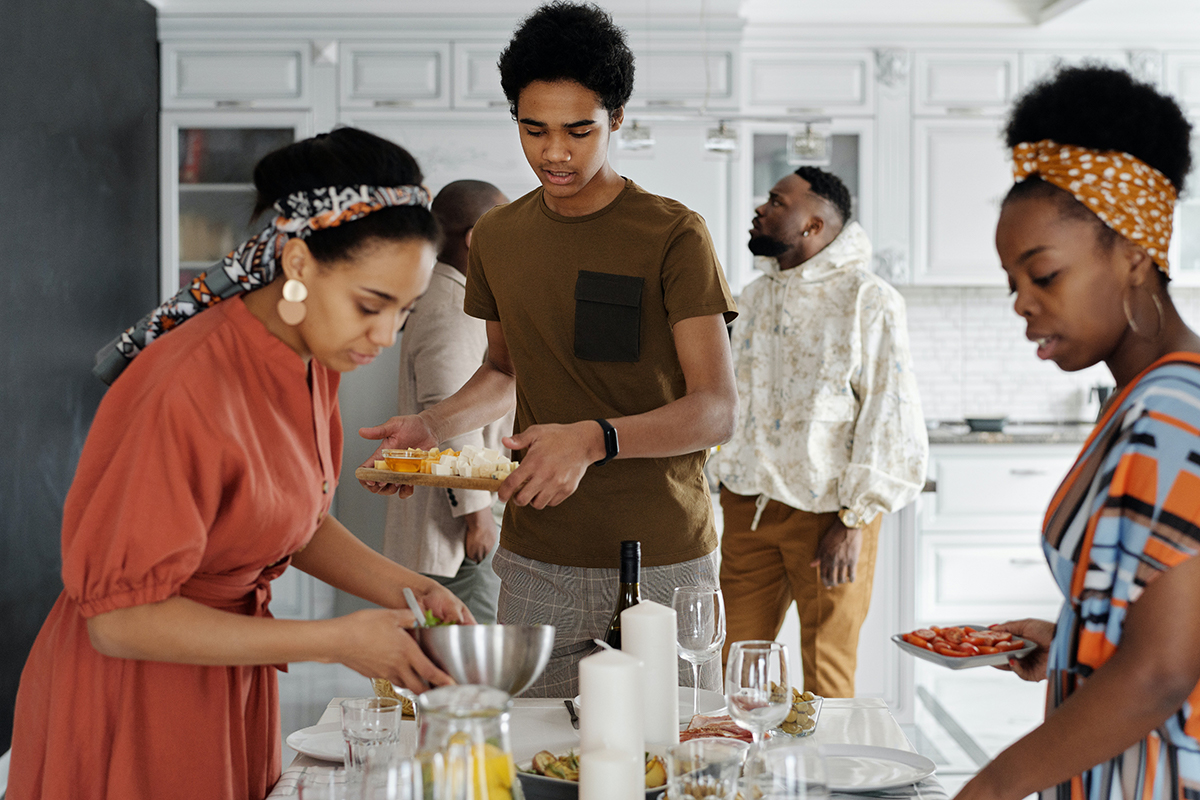
Tip #2: Delegate & outsource
Once your menu is set, see what items your guests can bring. There are always invitees who want to contribute. Take them up on their offer!
Accept helping hands
Doling out salads, desserts, and side dishes are a great way to include others without detracting from your pièce de résistance–whatever that might be. And since you’ve already created a menu, you can let your guests know what type of food to expect.
Delegating also extends to pre-meal tasks like a last-minute run to the grocery store and post-meal duties like clearing the table and doing the dishes. While generations past may balk at the idea of letting guests help, more hands will get the job done swiftly and let you spend more quality time with the people you care about.
Hire professional services
Don’t be shy about outsourcing. If you’re expecting a crowd, a sneaky trick we’ve stolen from catering private events is to rent dishes and flatware. This is a huge time saver. Instead of being on dish duty, while after-dinner revelry ensues without you, simply scrape off uneaten food, place the dishes back in their crates, and get back to the party. It’s not the most economical solution, but if time is what you’re after, this is completely worthwhile.
Another shameless shortcut is to simply have your meal catered. A catered meal can fit a range of budgets. Go big with a traditional caterer, or look into what your local grocery store offers. Check in with your favorite restaurants too. Many offer special menus around the holidays.
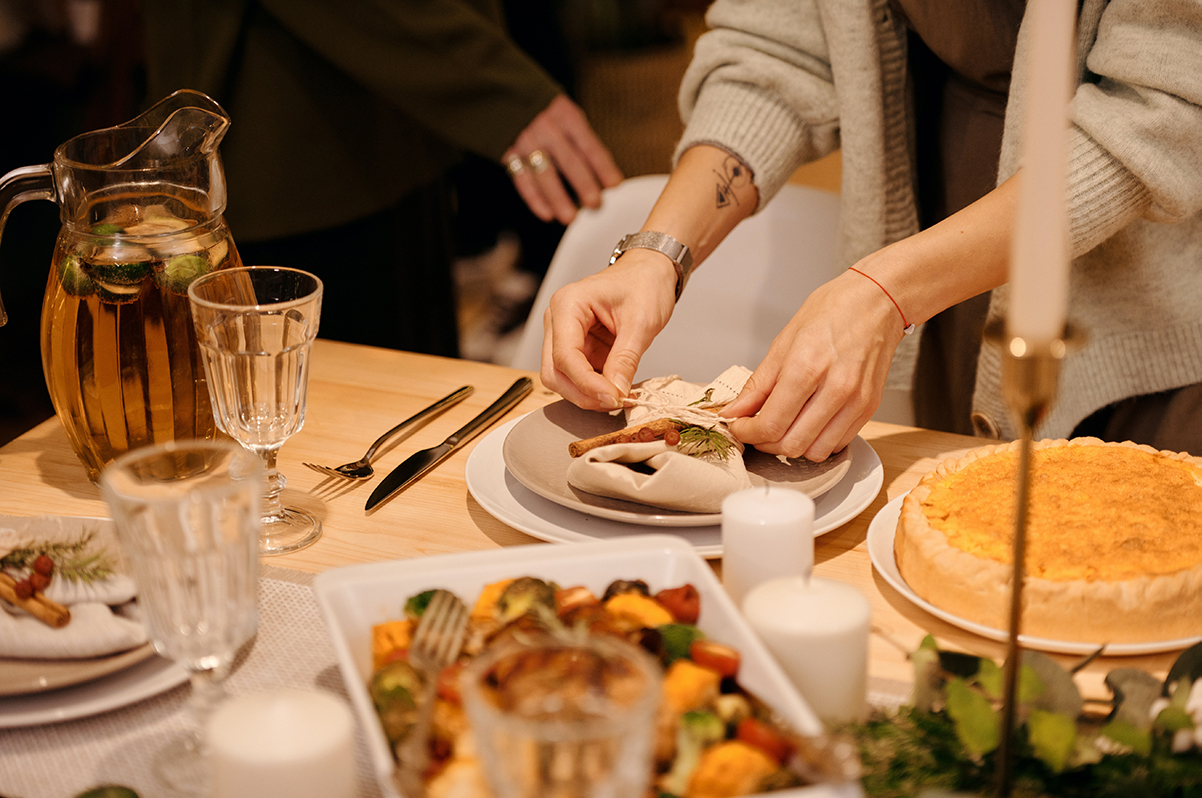
Tip #3: How to set a beautiful table for your dinner party
A beautifully set table is the icing on the cake of a great meal. It doesn’t have to be fancy or over the top, just intentional. Come up with a theme for your gathering—even if subtle—to create cohesion and give your guests an extra thrill.
If you’re celebrating the Winter Solstice, perhaps you go rustic—both with the menu and the décor. Think cedar plank salmon, roasted root vegetables, and artisan bread with a linen-free tablescape featuring a foraged centerpiece of pinecones, fir branches, and scent-free candles in mercury glass.
Some of our favorite themes include:
• Rustic
• Wonderland
• Minimalist
• Traditional
• Vibrant & colorful
• Holiday sparkle
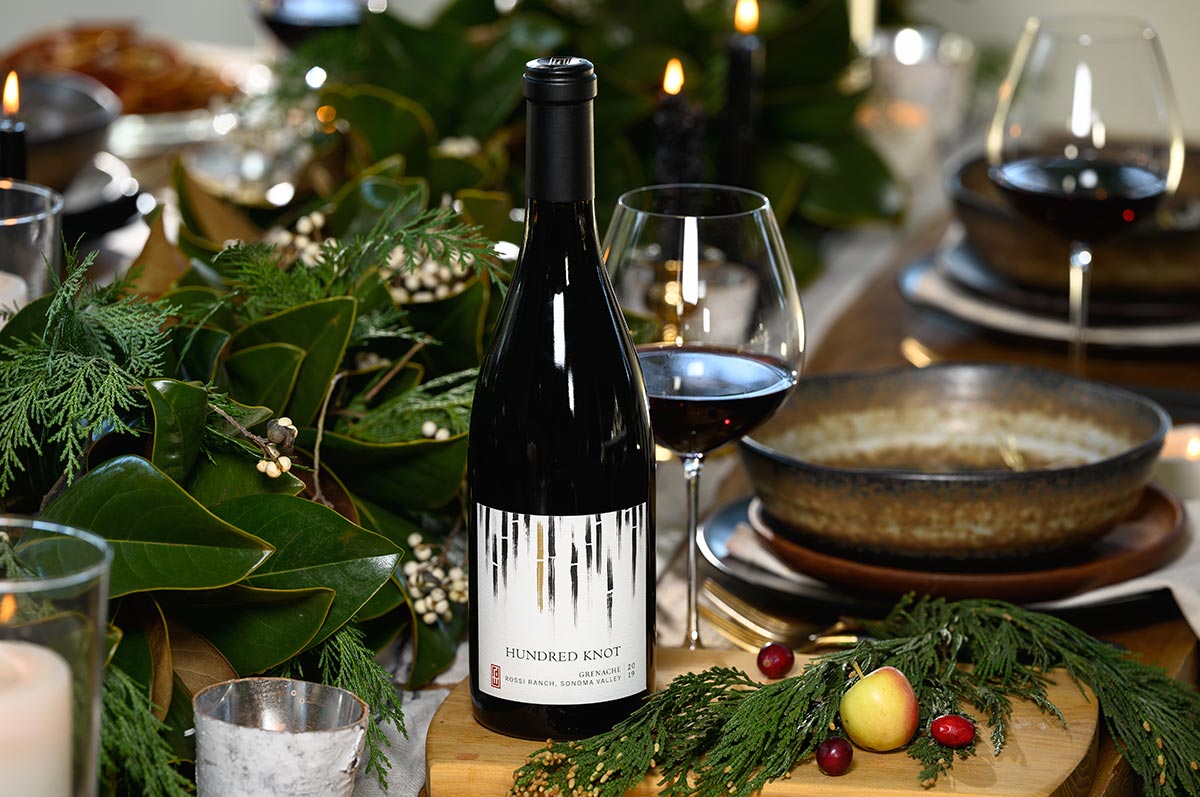
Tip #4: How to choose the best wine for your holiday meal
In our opinion, this is the most important and most fun part of hosting. Choosing wine can come before or after you’ve determined your menu.
Holiday wine pairing
If you’re really excited about a selection of wines, craft your menu around them. Conversely, if you have an idea about what dishes you want to make, then pick wines that are complementary. Whatever your method, here are a few tips to assure food and wine harmony:
Match weights
An easy rule to follow is like with like. Think lighter-bodied wines with lighter dishes, like salads and vegetables. Bigger, weightier wines typically go with richer side dishes like sweet potatoes and winter squash, or mains like seafood, poultry, or pork. If you’re serving a range of dishes, then consider a range of wines—or just keep it simple and serve rosé. It literally goes with everything.
Make it progressive
When deciding the order of your menu and wines, it’s a good rule of thumb to go from lightest to heaviest. In the United States, a traditional multi-course meal will begin with appetizers, then a salad, a lighter main like risotto, fish, or poultry, then a heavier protein, like venison, steak, or lamb. A cheese course or dessert finishes the meal off. In other cultures, the order of things can be a bit different. In France, for example, the salad comes after the main course, as sort of a palate cleanser before the cheese course. So, do what feels right to you. Your guests will love the experience.
Plan for tricky pairings
Vegetables like asparagus, artichokes, and Brussels sprouts can be challenging to pair with wine. You can avoid them or simply be strategic. Grüner Veltliner, for example, pairs quite well with the aforementioned difficult veggies. And whether you’re serving a brussels sprout dish as a course or part of a family-style assortment, putting Grüner on the table will ensure no dish goes wineless. Learn more about Tricky Food Pairing in our guide.
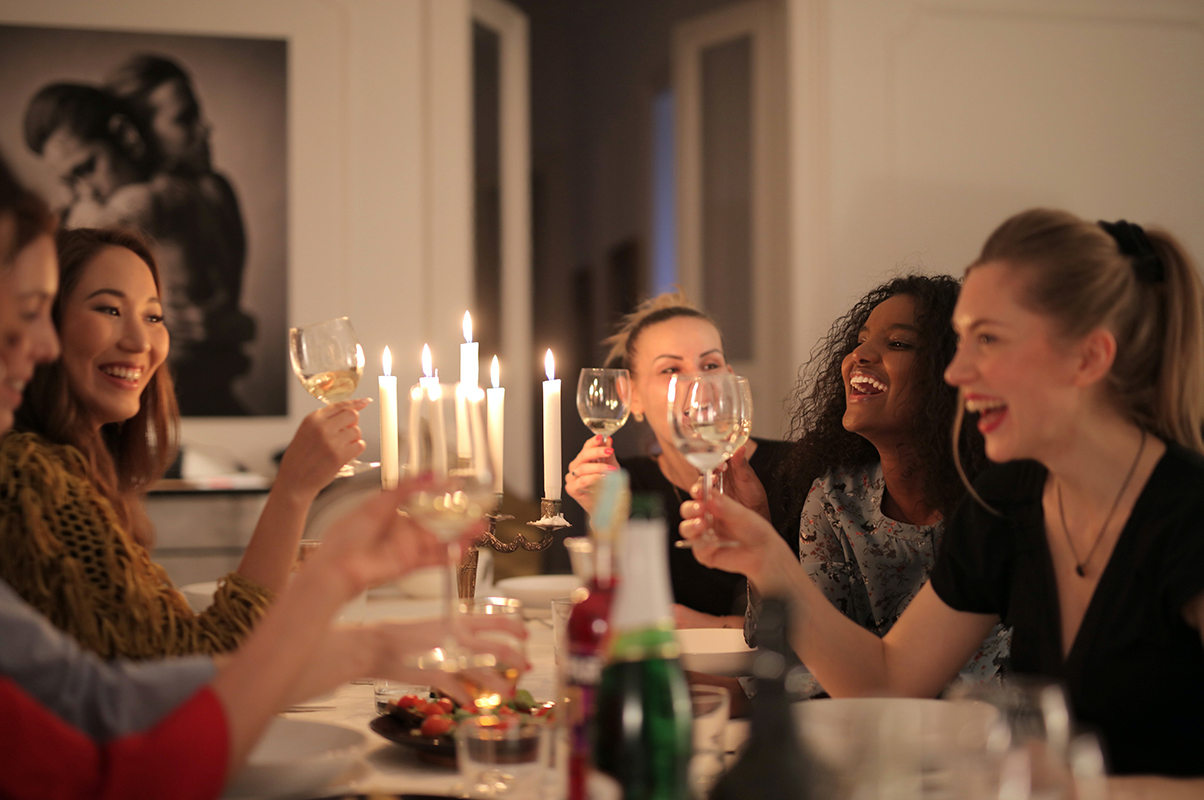
Tip #5: How to serve wine at a dinner party
Chances are you’re probably not planning to orchestrate a multi-course meal with a fleet of polished servers pouring a different wine with each course. That said, there are a lot of decisions you can make in advance to make the evening feel super impressive.
Course out your wine—even if your meal isn’t
For most of us, our meal will consist of placing all the dishes on the table and plopping down to enjoy them at once.
Here’s how to up the ante on traditional family-style service:
Choose a greeter wine
An aperitif is the first wine your guests will enjoy, likely alongside some appetizers. It should be something light and crisp to prepare the palate for what’s to come. Something bubbly can be a nice way to start, or even Grüner or rosé. Light, premixed cocktails or beer are also great to have on hand.
Offer white & red wines with dinner
If you plan to have both at your table but want to control the order in which your guests enjoy the wines, pre-pour the white so it’s in their glass when guests are seated. Have the red uncorked though and ready for enjoyment.
Serve novelties & gems last
As the meal winds down, you may wish to bring out an older vintage wine, perhaps something with a story, as a conversation piece. A so-called “library wine” is lovely alongside a cheese plate. Typical end-of-meal wines like Ports, ice wines, and Sauternes are also a nice way to close things out, on their own or alongside dessert or cheeses.

Select the right glassware
Glassware plays an important role in wine enjoyment, but it isn’t a make-or-break thing. If you’re expecting a crowd and the thought of washing and buffing dozens of crystal stems isn’t appealing, or you simply don’t have anything more than water glasses, do not fear. You can easily get away with one wine glass per guest by handing out wine charms or glass pens, to form a guest/glass alliance.
Make it fancy
If you want to go more formal, you might have 2-3 different glasses for each person. For example, if you’re planning to serve an aperitif, you might start with champagne flutes as guests arrive and mingle. At the table, have fresh wine glasses. If you want to do it up with a glass for white wine and one for red, you may have multiple glasses per setting, as space allows—small bowled glass for white wine. Large for red. Or whatever you have on hand.
Without opening a can of worms on glassware—it’s a serious rabbit hole—here’s a quick primer on glassware and its benefits to wine:
Larger bowls = red wine Gets that awesome swirl going, aerating the wine and bringing out all the sensational aromatics. It also lets you warm the wine with your hands, if needed, to encourage the wine to further open up. A narrower rim at the top focuses the aromatics and leads the wine gently over your palate.
Smaller bowls = white wine Keeps the wine cooler, concentrates the aromatics, and lets you bring your nose closer to the wine to enjoy the aromatics, which may be more subtle, especially when the wine is cold.
Stemmed vs. stemless There are benefits and challenges to both. Stemmed wine glasses give you somewhere to put your hands so you don’t unintentionally warm the wine. This is ideal for white wines that you want to serve chilled. Stemless wine glasses, however, are less accident-prone and a prudent choice for gatherings with a number of people.
At the end of the day, go with what you have. If you have varietally-correct stemware, then you fancy and we love it. If you have a mismatched assortment of wine glasses and mason jars, then fantastic; don’t give it a second thought.
Wine serving temperature
Bringing your wine to the right temperature before sipping can dramatically enhance the experience and your enjoyment! Typically, white wines and rosés are best served at cooler temperatures to let their acidity and crispness shine, while the nuances and characteristics of red wines will flourish at slightly warmer than cellar temperatures.
Here are our winemaker Timothy Milos’ recommended serving temperatures:
• Grüner Veltliner temperature: 45-55°F
• Pinot Noir temperature: 55-60°F
• Rosé temperature: 38-45°F
• Grenache temperature: 60-68°F
• Sauvignon Blanc temperature: 45-55°F
• Zinfandel temperature: 60-68°F
These are merely suggestions, as rules are meant to be broken. If you or your guests love a chilled glass of red, go for it! Just please don’t add ice cubes. 😉
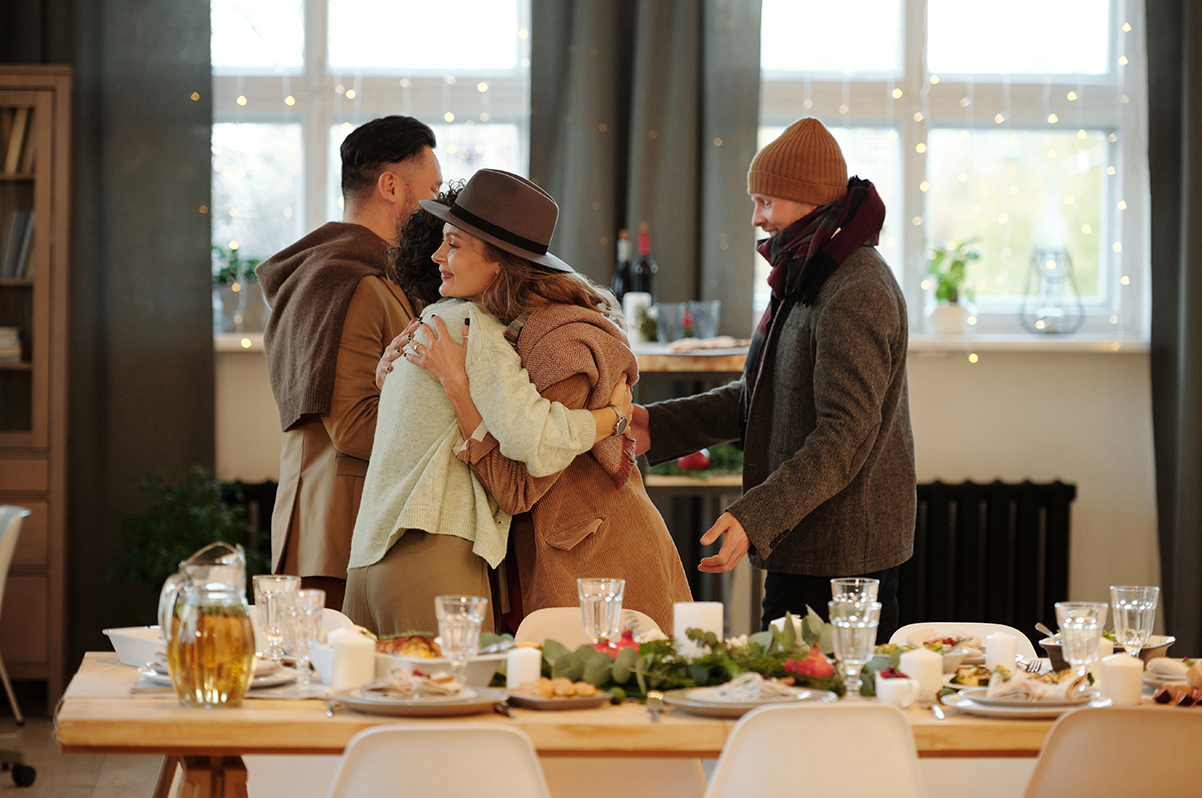
Tip #6: How much wine do you need for your dinner party?
When determining how much wine you need for your get-together, there are some considerations to keep in mind:
• Number of different wines you’re serving
• Drinking habits of your guests (non-wine drinkers, DDs, pregnant guests, etc.)
• Other beverages you’re planning to serve
• Amount of food
• Length of your event
• Alcohol content (ABV) of the wines you’ve selected
• Random guests who show up uninvited
Then, there are the cold, hard facts:
• How many glasses of wine in a bottle? There are 5 glasses in a bottle of wine.
• How many ounces in a bottle of wine? A bottle of wine is 25 fl. oz.
• Some people will drink more, some will drink less.
• It’s better to have too much wine than too little!
So, how many glasses per person should you plan for?
A good rule of thumb is to factor one bottle per person over the course of the night to make sure you have more than enough. You don’t have to open every bottle, but at least you’re prepared.
Special note
If you’re serving more than one type of wine during a meal, you may wish to make your pours smaller. Since you’re offering options, you can stretch each bottle from five to six guests. Just make sure you’re the one pouring the wine.
Need more help determining the correct amount of wine for your meal? Check out our Wine Estimator.
Dump buckets
Here’s an industry tip: If you’re serving more than one wine with dinner, put a couple of dump buckets on the table. Ceramic vases are perfect for this, just don’t use anything clear, cause yuck! A dump bucket not only lets guests pour out wine they’re not loving but cues folks that they don’t need to over consume.
